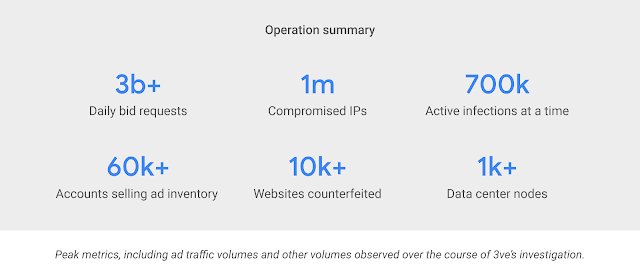Massive adfraud network exposed by Google and security researchers
Google and the US Department of Justice have released details of a massive ad fraud ring that allegedly defrauded advertisers out of US$36 million over four years.
The 3ve botnet scam, defrauded advertisers though spoofed legitimate domains and fraudulent ‘pop under’ ads being pushed onto the screens of infected Windows computers.
During the investigation, which involved security consultancy WhiteOps and twenty adtech industry partners, the researchers found advertisers were making between 3 and 12bn daily bid requests to 60,000 accounts.


